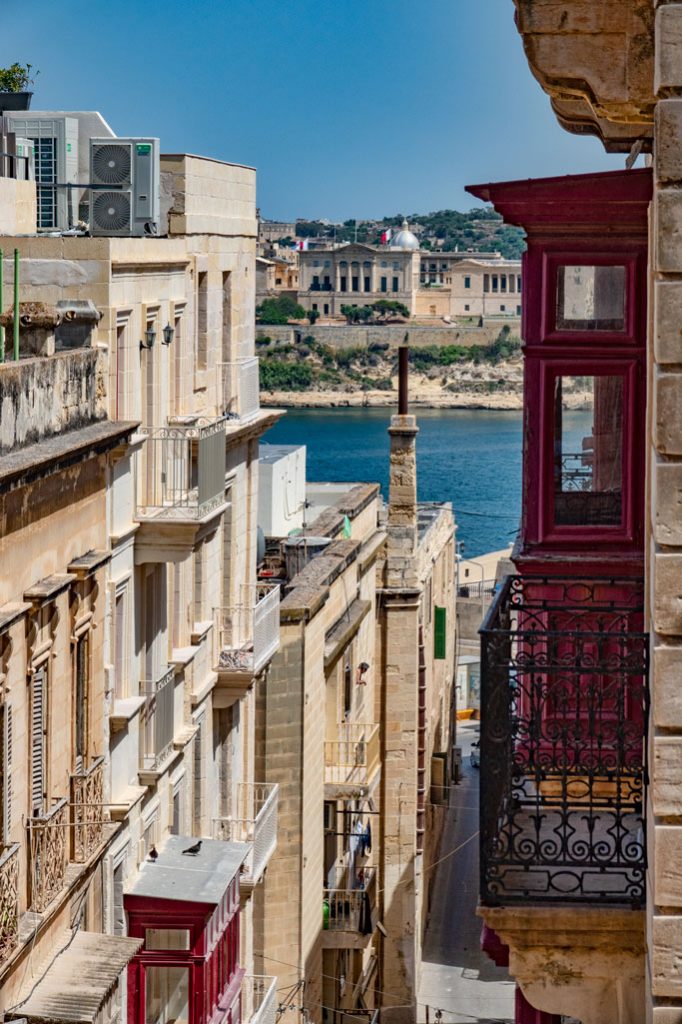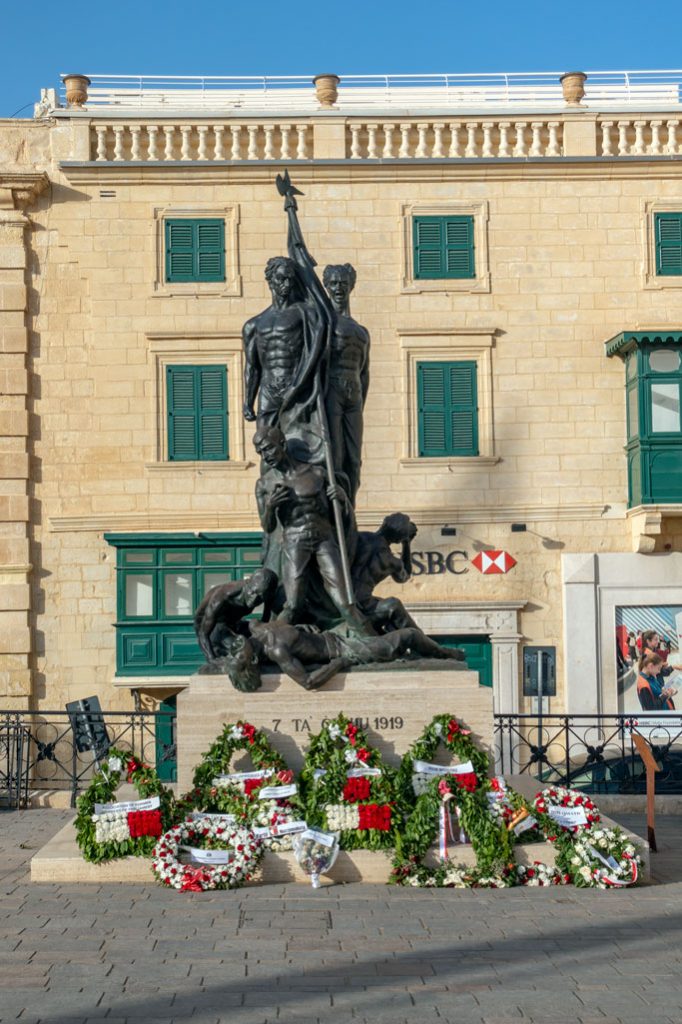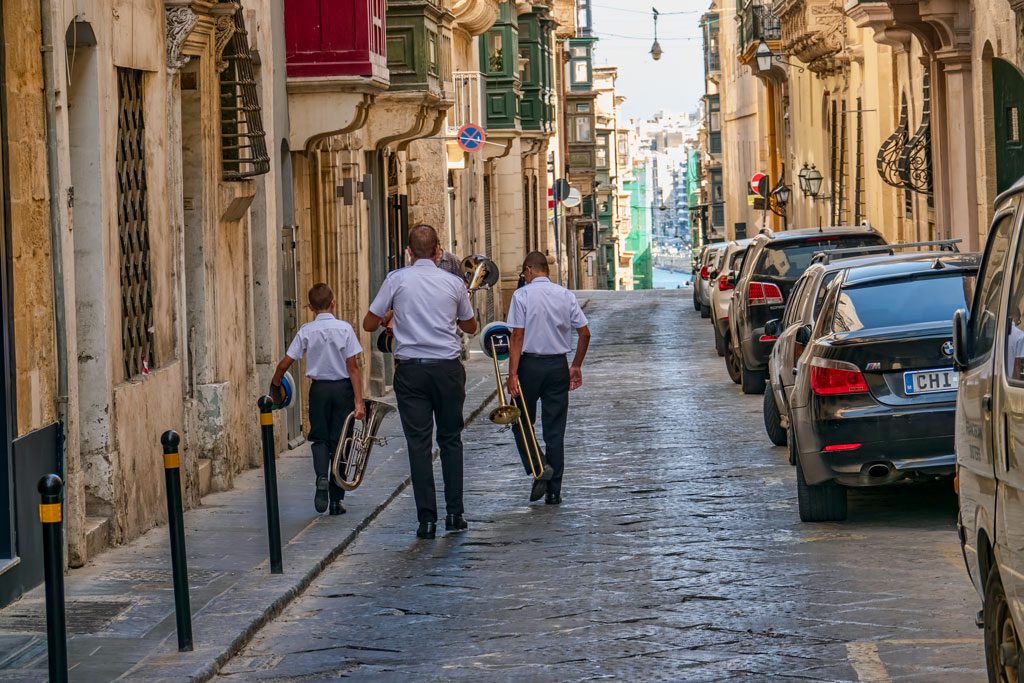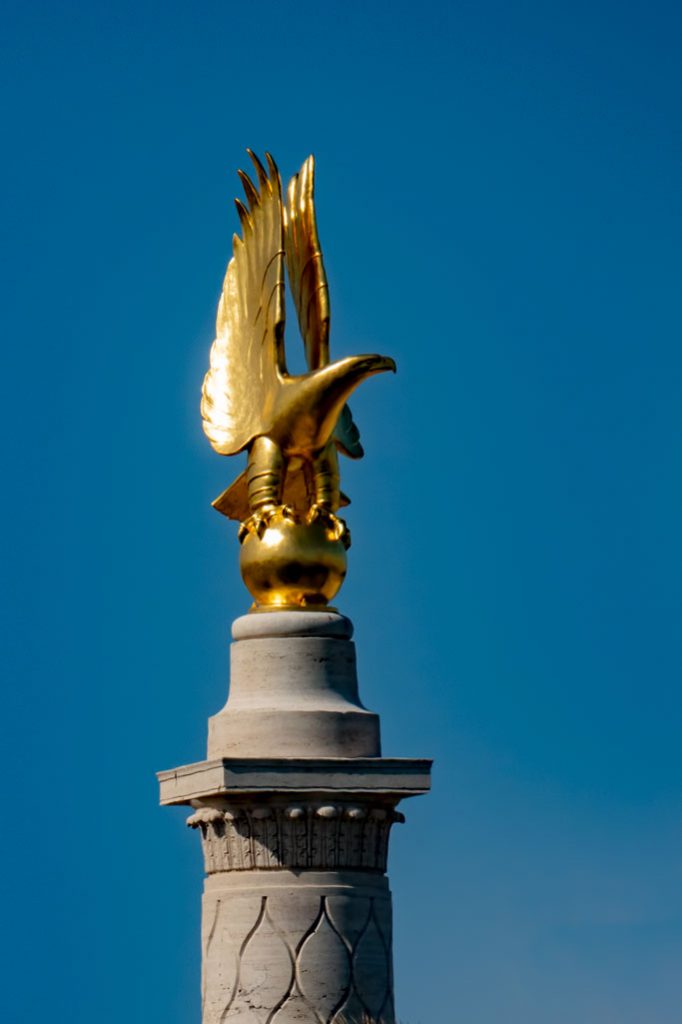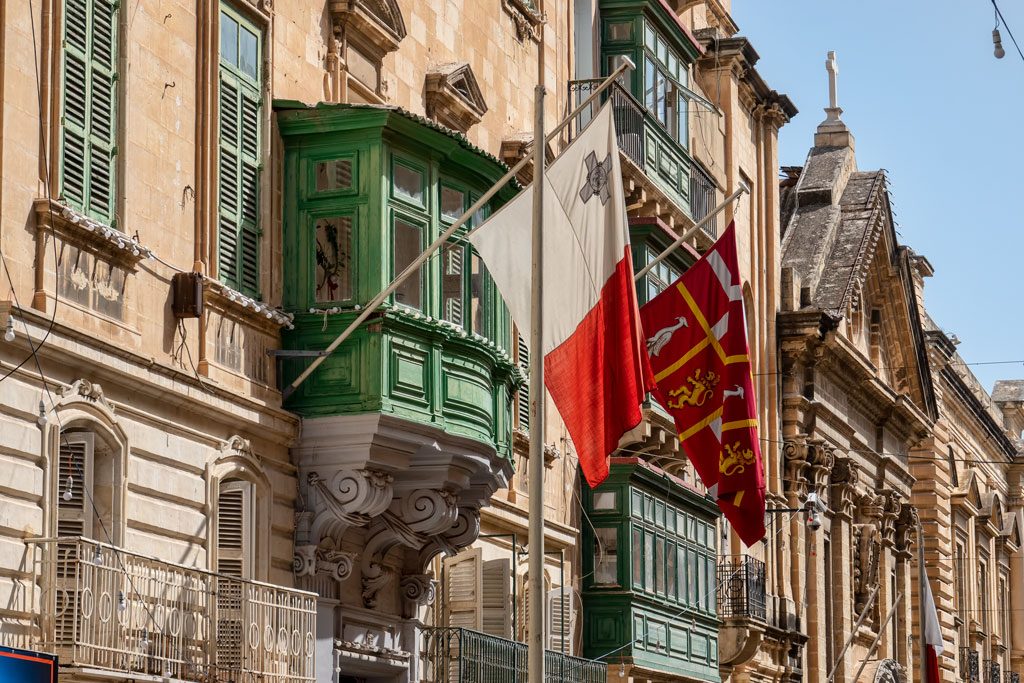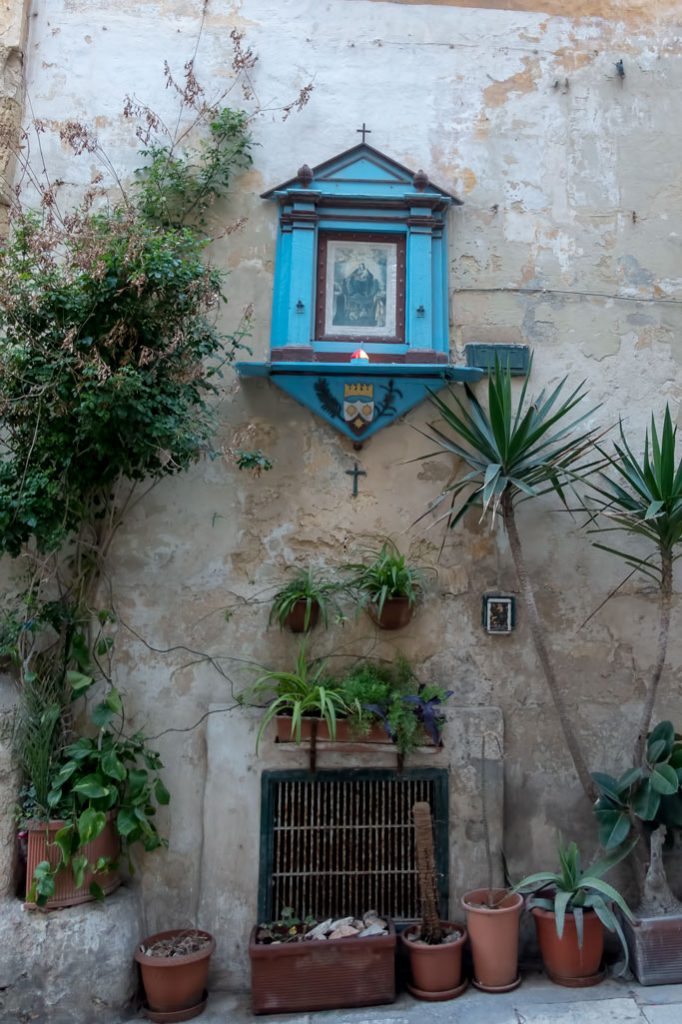TODAY’S TOURING
June 7 is a national holiday in Malta. Many of the stores and restaurants were closed. We were told there would be celebrations today, but no one told us what or where they. We did learn there would be a parade at 9:00 AM down Republica street. We started the morning with sweet pastries from Jeff’s Pastizzeria. Making coffee in the apartment was handicapped by not remembering how to use the Nescafe cartridge coffee machine. Thanks to the internet, we figured it out and got our coffee fix. Then we searched for signs of a parade. We found some musicians and followed them to the parade start location. It was early, so we checked out the nearby Triton Fountain and the city wall.
It turns out, the parade is really a slowly moving concert. The band plays one song and then walks forward about 100 feet, huddles for awhile to pick the next song, plays the song, and then repeats the process. The parade goes about 4 blocks in one direction, turn around, and returns to the starting point. The entire 8 blocks takes 2 hours. After about 30 minutes of listening to the parade, Marty & I explored the St. Frances of Assisi church. We then explored the Archaeological Museum next door. The museum was about 1 block from the start of the parade. When we exited the museum, the band had reversed directions and we joined the parade for a couple of more songs. It was a hot, sunny, humid day. By this time we were tired and returned to the apartment for a needed rest.
We had dinner at the Taproom Bistro. We were seated a large shared table with an excellent view of the kitchen. It was entertaining watching the chef and the kitchen staff preparing the meals. After dinner, took a long, slow walk back to the apartment.
REFERENCES
Sette Giugno
Sette Giugno (Italian) is a Maltese national holiday celebrated annually on June 7th. It commemorates events which occurred on that day in 1919 when, following a series of riots by the Maltese population, British troops fired into the crowd, killing four. This led to increased resistance and support for the pro-Italian parties that had challenged the British presence on the island.
Malta band clubs and band marches
Band clubs in Malta are part and parcel of the social and cultural history of the Maltese islands and have, over the years, established themselves as an institution in the core of every town and village, aimed at spreading Maltese culture and teaching of music.
The King’s Own Band
The King’s Own Band is a Maltese philharmonic band based in the country’s capital Valletta. Founded in 1874 as La Stella, the band later was renamed to La Nazionale and La Nazionale Vincitrice. The band was renamed to The Prince of Wales Band in 1885. Its current name, The King’s Own Band, was given by King Edward VII, who chose the name in 1901 upon advancing to the throne of the United Kingdom. The King’s Own Band still bears the title of Eccellenza (Excellence), a tribute to the high level that the band had achieved in Algiers (1912) while participating in the Grand Concours International de Musique.
St Francis of Assisi Church
St Francis of Assis Church was built in 1598 and was completed by 1607. After a few decades, however, the church developed structural defects and in 1681 it was built anew through the “munificence” of Grand Master Gregorio Carafa, whose coat of arms adorns the facade. The church was enlarged in the 1920s following plans by Emanuel Borg, which also included a dome. This implied the removal of some of the frescos by Giuseppe Calì, which were replaced with others by Gianni Vella.
However the church still hosts precious works of art including paintings by Mattia Preti, Pietro Gagliardi and Filippo Paladini, as well as the titular statue of St Francis. The church building is listed on the National Inventory of the Cultural Property of the Maltese Islands.
National Museum of Archaeology (Lonely Planet)
Exhibits include delicate stone tools dating from 5200 BC and Phoenician amulets, and there’s an amazing temple model from Ta’Ħaġrat – a prehistoric architectural maquette. More impressive still are the beautifully modelled prehistoric figuerines that were found locally. Best is the Sleeping Lady, found at the Hypogeum, which is around 5000 years old. It shows a recumbent woman with her head propped on one arm, apparently deep in slumber. The ‘fat ladies’ sculptures, found at Ħaġar Qim, have massive rounded thighsand arms, but tiny, doll-like hands and feet.They wear pleated skirts and sit with their legs tucked neatly to one side. The so-called Venus de Malta, also from Ħaġar Qim, isabout 10cm tall and displays remarkably realistic modelling. There are also beautiful stone friezes from the Tarxien Temples. Upstairs the new displays showcase the coarser pottery from the Bronze Age, animal figurines and jewellery, as well as information on the island’s mysterious cart ruts.



